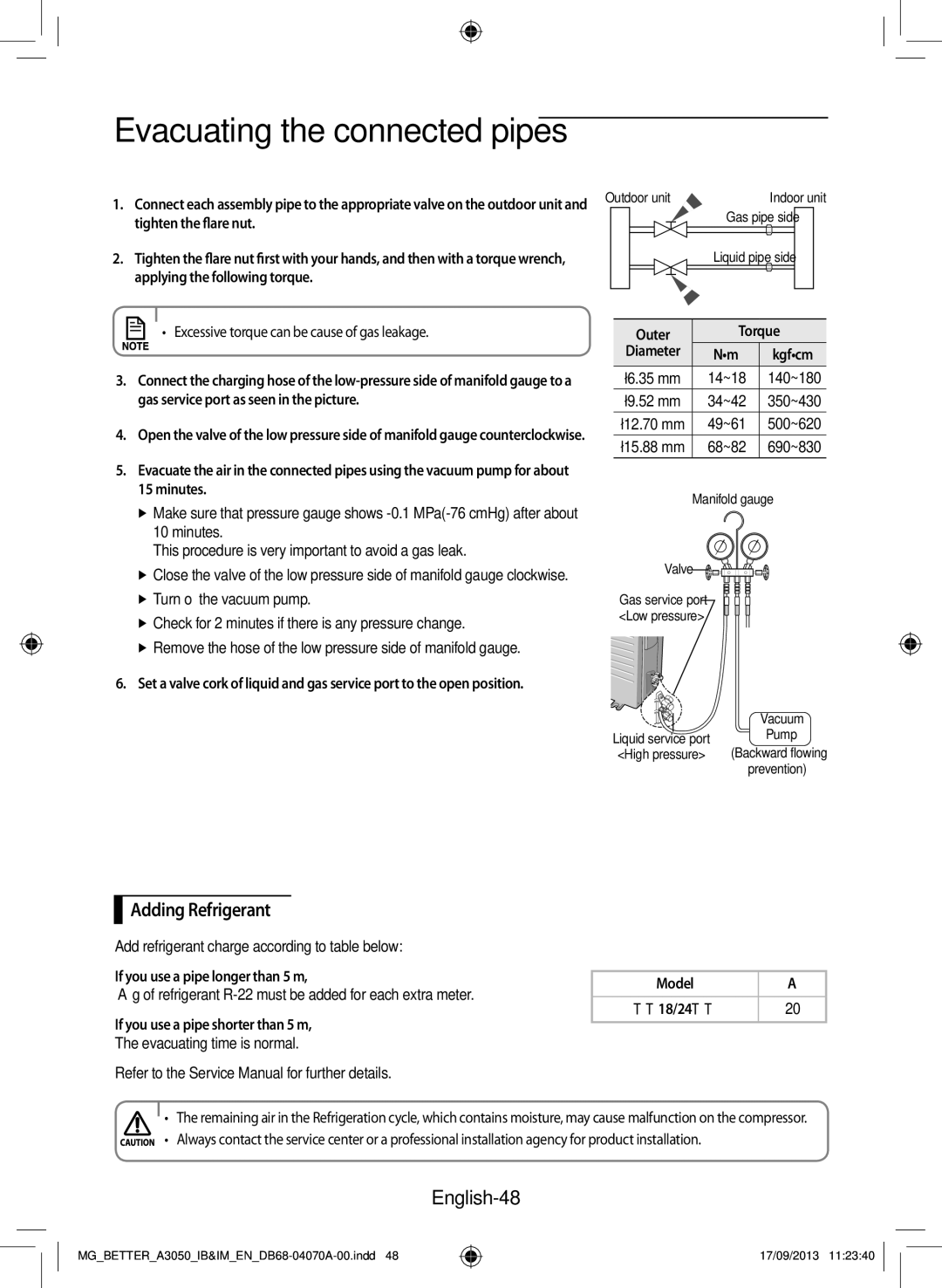AR24HPSDBWKNMG, AR24HCSDBWKXMG, AR18HPSDBWKXMG, AR18HCSDBWKNMG, AR18HPSDBWKNMG specifications
Samsung has long been a leader in home appliances and HVAC solutions, and their range of air conditioners, including the AR18HCSDBWKXMG, AR24HPSDBWKXMG, AR24HCSDBWKNMG, AR18HPSDBWKNMG, and AR18HCSDBWKNMG, is no exception. These models combine innovative technology with user-friendly features to provide efficient cooling and heating options for any space.One of the standout features of these models is Samsung's Digital Inverter technology. This technology allows the air conditioners to adjust their compressor speed to maintain the desired temperature more efficiently. By reducing energy consumption, the Digital Inverter technology not only helps in lowering utility bills but also minimizes noise levels, providing a more comfortable environment.
Another important aspect is the Smart Installation feature, which simplifies the setup process. Once the unit is installed, the system runs a diagnostic check to ensure everything is functioning correctly. This feature helps users avoid potential issues and provides peace of mind regarding their investment in a Samsung air conditioner.
The AR series also comes with Samsung's unique Wind-Free cooling technology. This innovation ensures that cool air is distributed uniformly throughout the room without the discomfort of cold drafts. The air flows through micro holes in the front panel, providing a gentle and consistent cooling experience.
Energy efficiency is a top priority for modern consumers, and these Samsung air conditioners are designed with eco-friendly R32 refrigerant. This refrigerant has a lower Global Warming Potential (GWP) compared to traditional refrigerants, making it a more sustainable choice for the environment.
In terms of design, these models boast a sleek and modern aesthetic that fits seamlessly into any interior decor. The easy-to-clean filters and anti-bacterial coating ensure that the air quality in your home is not compromised, providing a healthy living environment for you and your family.
Moreover, user convenience is enhanced with the presence of smart controls via Samsung's SmartThings app. Users can easily monitor and control their air conditioners from their smartphones, allowing for precise temperature management and efficiency even when away from home.
In conclusion, the Samsung AR18HCSDBWKXMG, AR24HPSDBWKXMG, AR24HCSDBWKNMG, AR18HPSDBWKNMG, and AR18HCSDBWKNMG air conditioners are designed with cutting-edge technology, energy efficiency, and user-friendly features in mind. These models not only enhance home comfort but also promote sustainability, making them an excellent choice for modern households looking to balance performance with environmental responsibility.

